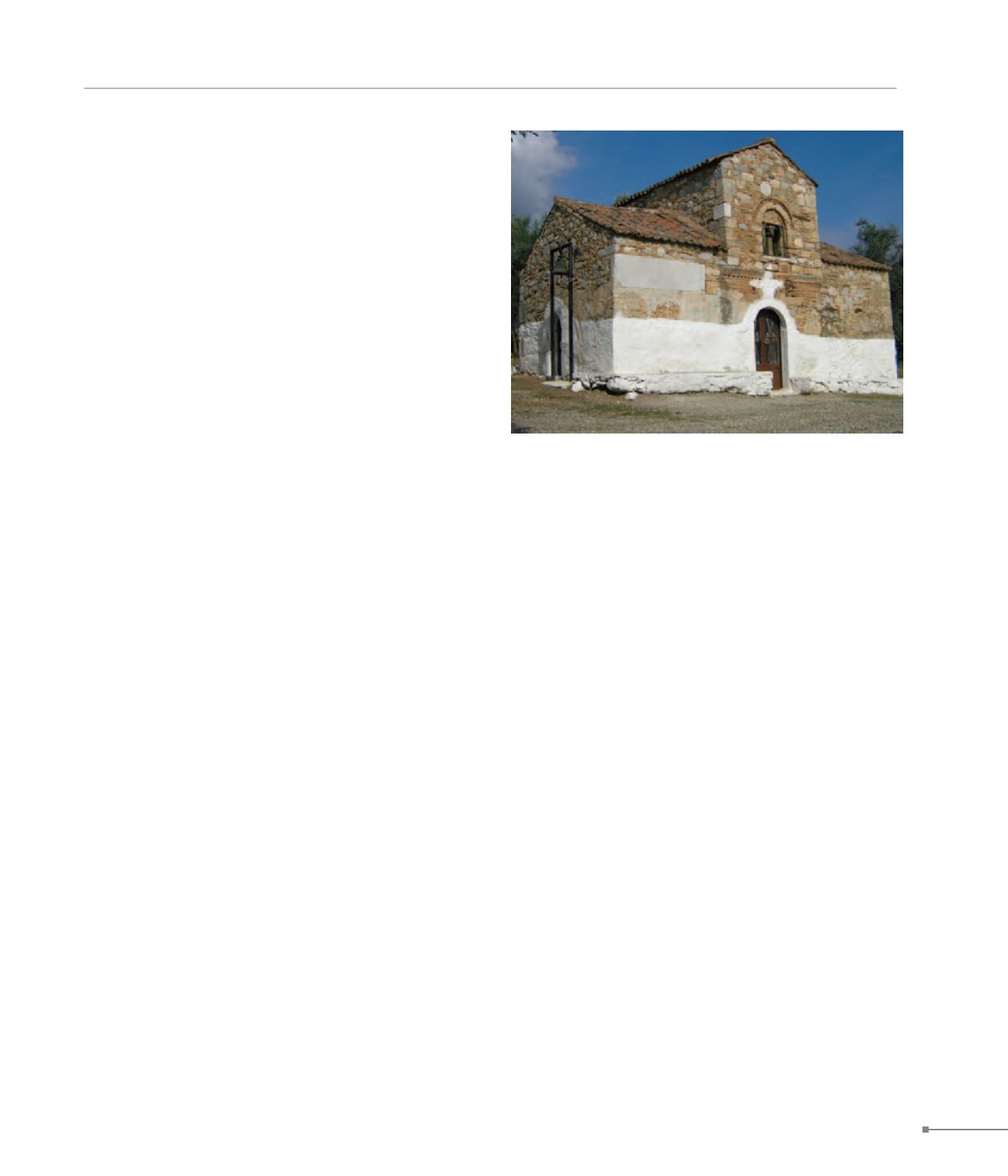
Eretria.
Chalkis.
EUBOEA
173
196.
Eretria.
E of Eretria, near the road to Amarynthos, lie the ruins of the
church of Aghia Paraskevi, possibly Early Christian, featuring
earlier building material in its masonry and Byzantine interven-
tions.
195. Gymno, Saint George (Γυμνό, Άγιος Γεώργιος)
197.
Saint George “Armas” Monastery.
This is located about 9 km E of Fylla village. The catholicon is a
complex, four-columned, cross-in-square church. Its E façade
has been built in cloisonné masonry. Numerous sculptures are
incorporated in the façades. The establishment of the catholi-
con dates from the 13th c., with subsequent repairs in the 16th
and 17th c. The possibility of a previous Early Christian church
having been replaced cannot be excluded.
198.
Fylla.
At the Nichori site, SW of the village of Fylla, remnants of an
Early Christian building, possibly a basilica, have been report-
ed. On the NE edge of the Lelantine plain, the Late Byzantine
fortress known as Oraiokastro or Kastelli (Lilanto), captured
by Licarios after 1279, crowns the crest of the hill. It maintains
good visual contact with Vigles, the two towers of Fylla further
W, Mytikas hill, as well as the Vasiliko tower.
199.
Vasiliko.
On the N edge of the village is preserved an almost intact Late
Byzantine tower.
200.
Afrati.
Excavations conducted over the past few years in Afrati have
brought to light a Byzantine church and graves, as well as ex-
tensive agricultural facilities (larders, winepress), attesting to
the existence of a Byzantine settlement in the area E of the
river Lelantas. At the Lechres site remnants of the walls of a Late
Byzantine fortress are to be found on a rocky height.
201.
Chalkis.
According to excavation data, in the Early Christian period the
town of Chalkis extended NW of Vathrovouni hill, where the an-
cient acropolis was located. In this area ruins of an Early Chris-
tian church have been detected, among others. At Gyftika, in
Chalkis, an Early Christian mosaic floor with geometric decora-
tion has been found in what was possibly a public building. It is
possible that the first phase of the large, timber-roofed, three-
aisled basilica of Aghia Paraskevi in the heart of the old town
of Chalkis (“Kastro”) dates to the same period. At the same
location, rescue excavations have brought to light architectural
remains belonging to the densely populated Byzantine city of
Euripus along with part of the circuit walls, dating from the 9th-
12th c.
In the Late Byzantine period Chalkis (Negroponte) remained
a significant transit centre and was the Venetians’ base for the
control of Euboea. Within the walls survives the House of the
Bailo, with its first building phase in the 13th c. and subsequent
interventions. The extensive reconstructions of the adjacent ba-
silica of Aghia Paraskevi, displaying Western influences, also
date from the second half of the same century. The pointed
vault-head arch of the bema, the tombstone bearing the coat of
arms of the sovereign Petrus Lippamano and the wall-paintings
with Late Gothic features (14th c.), all surviving in the same
place, as well as the groin vaults with the sculpted ribs in Gothic
style, are very impressive. The medieval wall was repaired by
the Venetians in 1461, prior to the occupation of the city by the
Turks in 1470.


